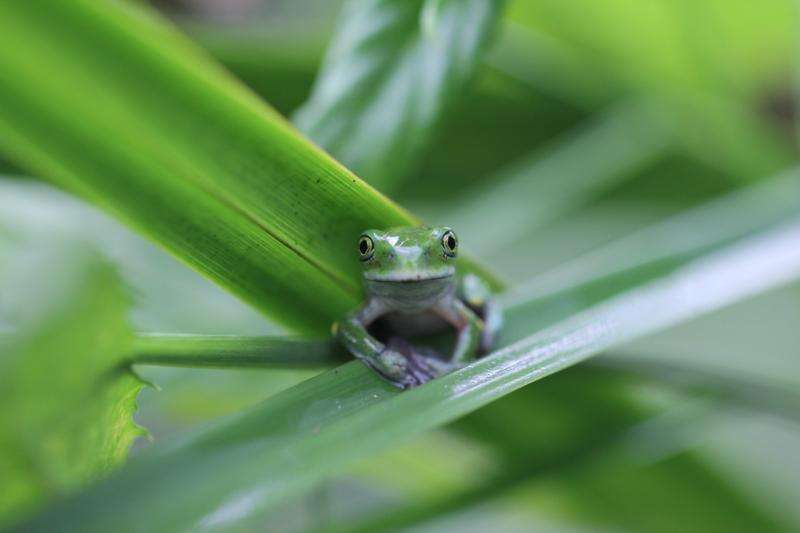Deadly amphibian fungus may decline, study says

A new study by WCS and other groups offers a glimmer of hope for some amphibian populations decimated by the deadly chytrid fungus: climate change may make environmental conditions for the fungus unsuitable in some regions and potentially stave off the spread of disease in African amphibian populations struggling to adapt to changes brought about by global warming.
Chytrid or Bd - short for Batrachochytrium dendrobatidis - can cause a disease called chytridiomycosis, which is found worldwide and is a major contributor to amphibian declines and extinctions.
The study took place in Africa's wildlife-rich Albertine Rift, which extends along parts of Uganda, Rwanda, Democratic Republic of Congo, Burundi, and Tanzania. Researchers conducted a baseline assessment of how chytrid was affecting amphibians in the region and found the fungus was widespread.
However, when measured under climatic modeling scenarios, the range of the fungus will contract by 2080 say the study's authors. Under the model they developed, the scientists say the likelihood of Bd occurrence is predicted to decrease during warmer periods, and when precipitation exceeds an annual rainfall threshold above 1,800 mm per year. But the authors warn that climate change may negatively affect amphibians in other ways such as reducing available habitat.
"We infer that Bd prevalence in the Albertine Rift may decrease as a result of climate change," said the study's lead author Dr. Tracie Seimon of WCS. "This is borne out by the modeling we have presented here, which indicates a major range contraction of habitat suitability for this fungus by the end of the century."
In addition, microscopic examination of amphibians did not reveal the presence of disease in the majority of the infected frogs indicating they may be regionally resistant.
Said co-author Dr. Denise McAloose, Chief pathologist at WCS "While chytrid is wiping out amphibians worldwide, there may be some resistance of amphibians in the Albertine Rift to this organism. However, further study is needed to better understand resistance to other strains with different pathogenicity, or the potential for environmental triggers such as seasonal variations to make frogs more susceptible to current strains."
The researchers took samples from museum specimens of amphibians and discovered the earliest record of the fungus came from an Itombwe River frog collected in 1950 in the Democratic Republic of Congo.
Said co-author Dr. Andrew Plumptre of WCS: "The long history of chytrid in the Albertine Rift, coupled with our findings that most frogs found carrying this fungus appeared to be in good health, gives us hope that frogs in this part of Africa are somewhat resistant to this disease"
The scientists say that baseline data they collected and modeling predictions are important for comparative studies, especially if significant changes in amphibian health status or climatic conditions are encountered in the future.
"The Albertine Rift is one of the world's hotspots for amphibian biodiversity, and is also one of the most threatened" said Seimon. "Baseline data on Bd can help to form a more complete picture of the presence and significance of this fungus and help guide and inform discussions on climate and species-related conservation strategies at both the local and global levels."
More information: Tracie A. Seimon et al. Assessing the Threat of Amphibian Chytrid Fungus in the Albertine Rift: Past, Present and Future, PLOS ONE (2015). DOI: 10.1371/journal.pone.0145841
Journal information: PLoS ONE
Provided by Wildlife Conservation Society




















